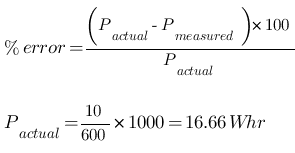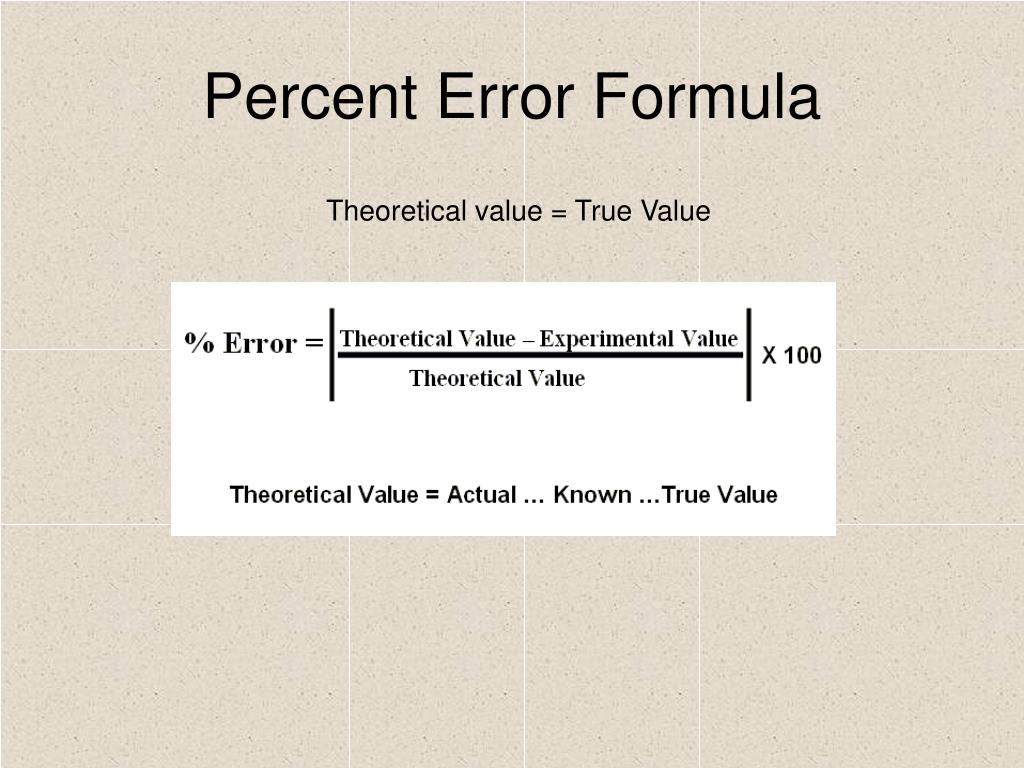


However, after he carefully measured his height a second time, he found his real height to be 5 feet.

It is also known as absolute error, and the lesser it is, the closer you. However, be careful! The accepted value is 65, so your percent error is 15/65 = 0.2307 = 0.2307/1 = (0.2307 × 100)/(1 × 100) = 23.07/100 = 23.07%Ī man measured his height and found 6 feet. Percent error compares the experimental figure obtained to the known or actual value. Percentage Error: ignore a minus sign (just leave it off), unless you want to know if the error is under or over the exact value Percentage Difference: ignore a minus sign, because neither value is more important, so being 'above' or 'below' does not make sense. The greatest percent error among the measurements is about 27.3%.Notice that in the problem above, if the true value was 65 and the measured value was 50, you will still do 65 − 50 to get the amount of error, so your answer is still positive as already stated. fraction absolute value of 0.3, , over 1.1 end fraction, row4 column 1, , column 2 almost equal to, 0.273, comma or 27. 8 minus 1.1 vertical line, over 1.1 end fraction, row3 column 1, , column 2 equals.

actualvaluevertical line, over actualvalue end fraction, row2 column 1, , column 2 equals. fraction vertical linemeasuredorestimatedvalue. The experimental value is your calculated value, and the theoretical value is your known value. 3% table with 4 rows and 2 columns, row1 column 1, percent, , error, column 2 equals. Percent error = |measured or estimated value − actual value| actual value = |0. The greatest percent error comes from the measurement 0.8 g. The greatest percent error comes from the measurement that deviates the most from the actual value. If the rock's actual mass is 1.1 g, what is the greatest percent error among the measurements? Round to the nearest tenth of a percent. Percent error is a common metric to use for measuring the accuracy of a prediction or estimation, and as the name suggests, it is provided in the form of a percentage. The dot plot shows the measurements made by a science class. Percent error in a collection of data is the difference between the exact and approximate values compared to the original value. (An ice bath can be prepared by placing ice and tap water in a 400-mL beaker. Obtain about 60 mL of distilled water in a small plastic beaker and place it in an ice bath. Example Using a Dot Plot to Compare Percent Error Materials (oven at 10 0 C) Experimental Procedures You may perform parts A and B of this procedure in any order.


 0 kommentar(er)
0 kommentar(er)
